Key Resources
State Energy Loan Fund Overview - This two-pager offers an overview of state energy financing programs, particularly revolving loan fund design and administration models in use by the State Energy Offices.
State Energy Financing Programs Database - This webpage includes links to more information on specific financing mechanisms as well as a map-based database of loan programs operated by the State Energy Offices.
Publications
 Energy Efficiency Proposals in Fannie Mae and Freddie Mac’s Draft Underserved Markets Plans
Energy Efficiency Proposals in Fannie Mae and Freddie Mac’s Draft Underserved Markets Plans
Author(s): NASEO
Through the Duty to Serve (DTS) rule, the Federal Housing Finance Agency (FHFA) requires Fannie Mae and Freddie Mac to facilitate a secondary market for mortgages on housing for low-income families in three underserved markets: manufactured housing; affordable housing preservation; and rural housing. Energy and water efficiency is among the activities that are eligible for DTS credit, including financing of multifamily energy efficiency improvements and financing of single-family energy efficiency improvements. NASEO has produced a summary document containing excerpts from each Underserved Markets Plan related to energy and water efficiency.
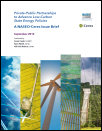 Private-Public Partnerships to Advance Low-Carbon State Energy Policies
Private-Public Partnerships to Advance Low-Carbon State Energy Policies
A NASEO-Ceres Issue Brief
Author(s): NASEO, Ceres
This white paper identifies key pieces of information that state energy policymakers and U.S. companies and investors should know about one another, and it offers a “deeper dive” on a series of energy policy topics — including clean energy policies, financing mechanisms, and corporate sustainability approaches — on which both state and company/investor representatives can find common ground.
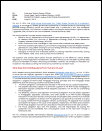 R-PACE Summary Memo to State Energy Offices
R-PACE Summary Memo to State Energy Offices
Author(s): Sandy Fazeli, NASEO
On July 19, 2016, the White House announced the “Clean Energy Savings for All Americans” Initiative, a cross-agency federal government partnership to increase access to solar energy and promote energy efficiency across the United States and, in particular in low- and moderateincome communities. This initiative is underpinned by the Obama Administration’s goal to deliver 1 gigawatt (GW) of solar to low- and moderate- income families by 2020.
 Federal Financing Reference Guide
Federal Financing Reference Guide
Author(s): Sandy Fazeli, Managing Director, NASEO
In response to the President’s Climate Action Plan, several federal government agencies offer funding and financing mechanisms to support energy efficiency, renewable energy, and alternative fuel deployment. The table found within draws significantly from a DOE report, “Federal Financing Programs for Clean Energy,” released in 2016. The forthcoming report provides detailed information for business owners, homeowners, investors, and policymakers on the wide variety of federal financing programs available.
 Accelerating the Commercial PACE Market: Statewide Programs and State Energy Office Participation in Property Assessed Clean Energy (PACE) Financing
Accelerating the Commercial PACE Market: Statewide Programs and State Energy Office Participation in Property Assessed Clean Energy (PACE) Financing
Author(s): Sandy Fazeli, NASEO
This report focuses on how State Energy Offices and other state-level partners can create an environment in their state that will increase local participation and uptake of Commercial Property Assessed Clean Energy (C-PACE) financing. It offers examples, insights, and strategies for State Energy Offices, green banks, state financing agencies, or other public and private entities to provide coordination and support to C-PACE programs.
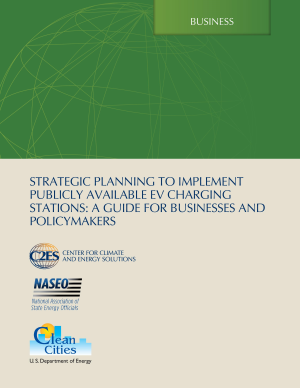 Strategic Planning to Implement Publicly Available EV Charging Stations: A Guide for Businesses and Policymakers
Strategic Planning to Implement Publicly Available EV Charging Stations: A Guide for Businesses and Policymakers
Author(s): Center for Climate and Energy Solutions
This guide answers questions that private investors and state and local agencies, such as state energy offices, may have in deciding whether and to what extent they should invest in publicly available charging infrastructure. It demonstrates that with continued public support in the near term, new business models could gradually make publicly available charging projects profitable for private businesses without additional government interventions.
 Applying the Energy Service Company Model to Advance Deployment of Fleet Natural Gas Vehicles and Fueling Infrastructure
Applying the Energy Service Company Model to Advance Deployment of Fleet Natural Gas Vehicles and Fueling Infrastructure
Author(s): Center for Climate and Energy Solutions
This paper explores the opportunity for using ESCO-style service contracts to advance investment in natural gas vehicles by fleets. Starting with a brief overview of the ESCO market, this paper explains how ESCOs reduce barriers faced by energy efficiency and cost savings projects, presents case studies that demonstrate how some of the features of ESCOs are being employed in cutting-edge NGV fleet projects, and explores how these features could be incorporated into innovative business models that reduce the barriers to NGV fleet project investment.
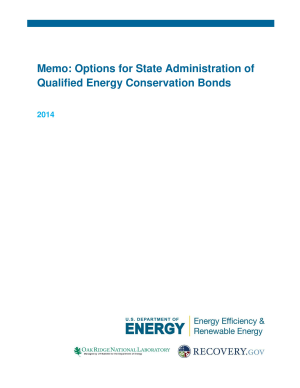 Options for State Administration of Qualified Energy Conservation Bonds
Options for State Administration of Qualified Energy Conservation Bonds
Author(s): Sandy Fazeli
The purpose of this memorandum is to assist states in the administration of qualified energy conservation bonds (QECBs), by increasing understanding of the wide range of options and precedents. Activities described–from the very low touch to more involved, high touch efforts–include: authorization, notification, simple state issuances, outreach and education, waivers and reallocation, and more complex state issuances. As states look to make decisions about using their own remaining QECB allocations, as well as supporting the use of local allocations, they can use this information to consider the full range of possible actions, depending on available resources and goals.
 Unlocking Demand
Unlocking Demand
An Analysis of State Energy Efficiency and Renewable Energy Financing Programs in Buildings and Industrial Sectors
Author: Sandy Fazeli, Program Manager, NASEO
The 56 State and Territory Energy Offices’ investments in energy efficiency and renewable energy projects have grown over three decades, not only through cost-shared support for technology demonstrations and commercialization, but also through a variety of financing programs and mechanisms. Over the past several years, the number and scale of these public-private financing programs have grown; the total estimated investment stands at $3 billion in 2013, with significant additions expected in the coming year. The types of financing tools used by State Energy Offices have evolved from revolving loan funds to sophisticated credit enhancement mechanisms and new approaches to bond financing. With successful models expanding across the United States, the National Association of State Energy Officials (NASEO) has completed an analysis of state energy financing programs focused on the buildings and industrial sectors to identify and evaluate approaches that have been implemented by State Energy Offices and their public and private partners.
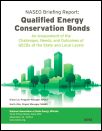 Qualified Energy Conservation Bonds
Qualified Energy Conservation Bonds
An Assessment of the Challenges, Needs, and Outcomes of QECBs at the State and Local Levels
Author(s): NASEO: Diana Lin, Program Manager; Garth Otto, Project Manager
Qualified energy conservation bonds (QECBs) present an opportunity for state and local governments to finance energy efficiency and renewable energy projects and programs, but they are under-utilized. This publication documents efforts by NASEO’s State Energy Financing Committee and the Energy Program Consortium (EPC) to better understand the need and challenges to using QECBs and offers recommendations to improve QECB uptake.